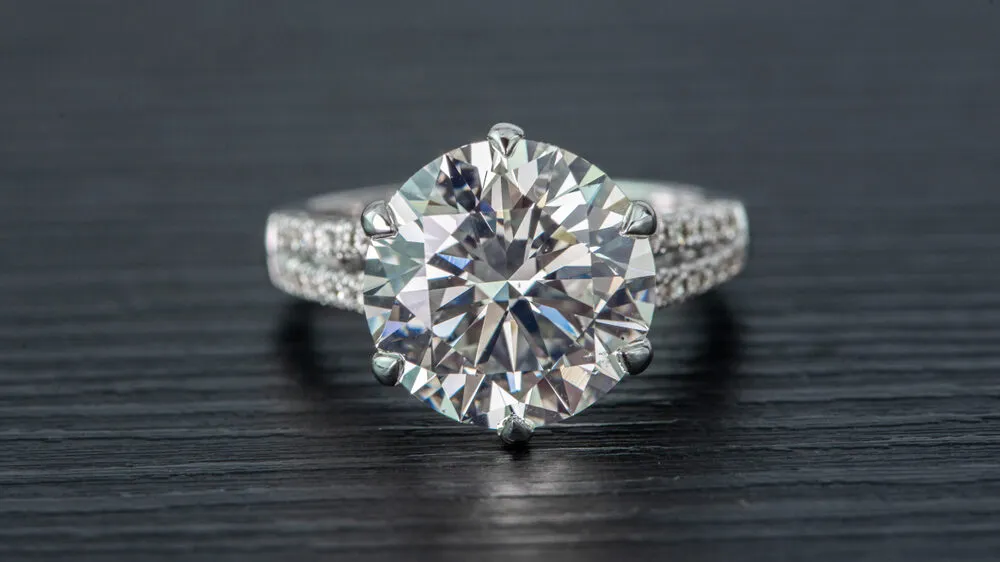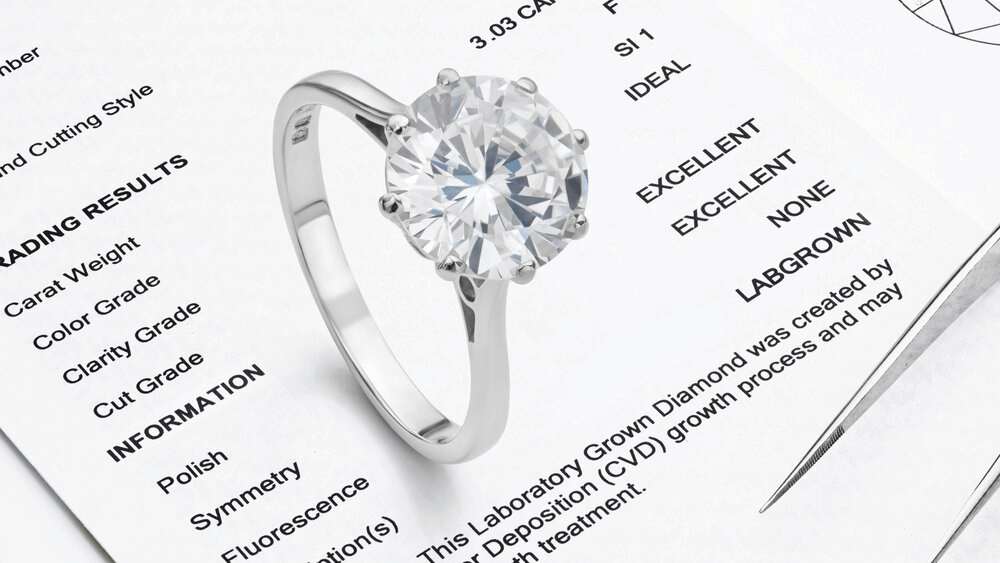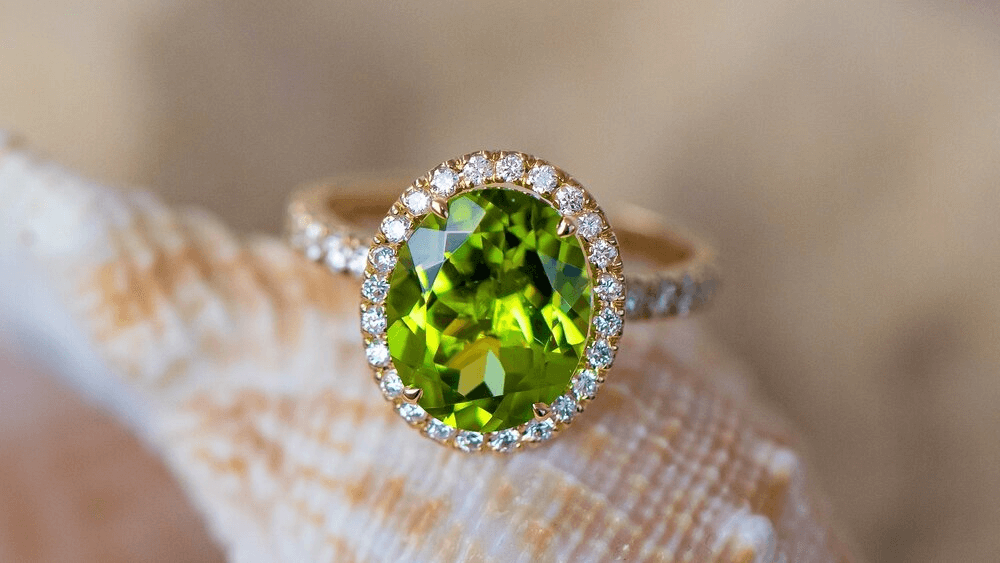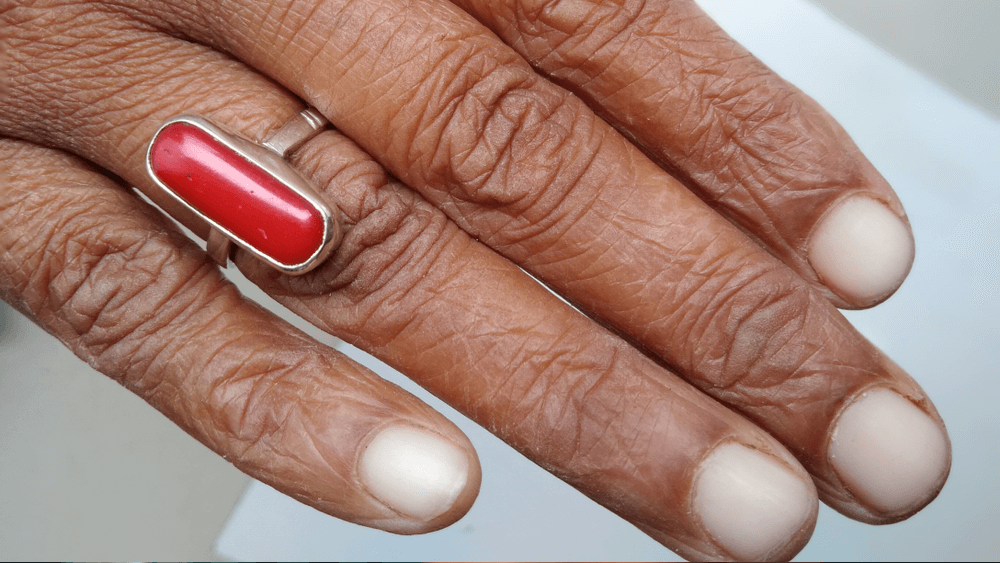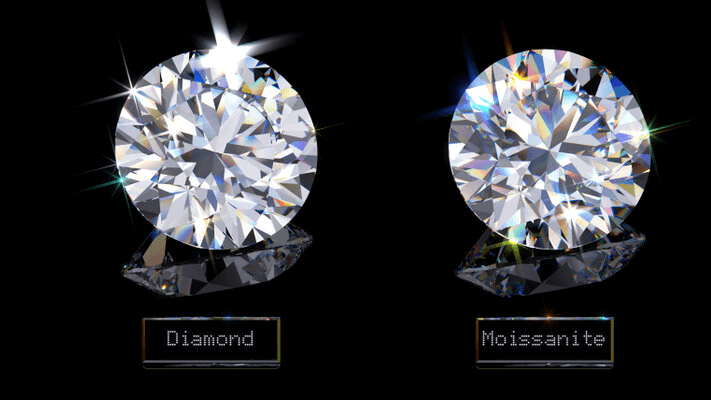Lab-Grown Diamond Certification: Why IGI Dominates

By Gary A.

Edited by Olivia H.
Published Aug 30, 2024
Edited on Jan 26, 2025
Lab grown diamonds are still relatively new to the game, but shoppers need to understand how certification plays a crucial role in finding a great one. Here’s your full guide.

Navigate this guide:
- 6 Quick Tips for Buying a Diamond Engagement Ring with Lab Grown Diamond Certification
- Introduction to Lab Grown Diamonds
- The Certification Giants: GIA vs. IGI
- Deciphering the 4Cs in Lab Grown Diamonds
- The Impact of Certification on Value and Choice
- How to Choose the Right Lab Grown Diamond
- Our Expert Take: GIA or IGI?
- 10 Frequently Asked Questions About Lab-Grown Diamond Certification
6 Quick Tips for Buying a Diamond Engagement Ring with Lab Grown Diamond Certification
- Tip 1. Verify the Certification Body
- Ensure that the lab grown diamond is certified by a reputable organization. The most recognized are GIA (Gemological Institute of America), IGI (International Gemological Institute).
- Remember: not all certification bodies have the same standards or methods.
- Tip 2. Understand the 4 Cs of Diamond Grading
- Just like natural diamonds, lab grown diamonds are graded based on the 4 Cs: Carat, Cut, Color, and Clarity. Familiarize yourself with these to understand the diamond’s quality.
- The certification should detail these attributes. Make sure they match what you are being told or what’s advertised.
- Tip 3. Examine Laser Inscription
- Many certified lab grown diamonds have a microscopic laser inscription on the girdle, linking them to their certificate.
- This inscription can be viewed under magnification and should match the certificate number.
- Tip 4. Be Wary of Pricing That’s Too Good to Be True
- While lab grown diamonds are typically 90% less expensive than their natural counterparts, prices that seem unbelievably low might be a red flag.
- A significantly lower price could indicate a less reputable certification or even a synthetic diamond simulant like cubic zirconia.
- Tip 5. Review the Diamond’s Origin and Growth Method
- Lab grown diamonds can be produced using various methods, with the most common being HPHT (High Pressure High Temperature) and CVD (Chemical Vapor Deposition).
- The certification should mention this. Some consumers might have a preference based on sustainability or other factors.
- Tip 6. Be Conscious of Retailer Reputation
- Lastly, always buy from reputable jewelers and retailers.
- Check reviews, ask for recommendations, and ensure they have a transparent return or exchange policy.
- Remember, knowledge is power. An informed purchase ensures you get the best value and quality for your money.
Now that you’ve got these practical tips, use Jeweler AI below to find the perfect engagement ring that suits your style and budget.
Introduction to Lab Grown Diamonds
As lab grown diamonds continue to carve out their place in the jewelry world, one critical factor is shifting the narrative: certification. Traditionally, diamond certification has been a hallmark of quality and trust, but now, it’s more than just a seal of approval—it’s a game changer for lab grown diamonds.
Understanding the ins and outs of certification is key to making an informed purchase, especially in a market where options are expanding and evolving rapidly. This article explores how lab grown diamond certification is not only ensuring quality but also transforming how we perceive value and authenticity in the diamond industry.
By the end, you’ll have a clearer view of why certification matters more than ever and how it’s empowering buyers to choose with confidence. Let’s explore how this shift is redefining what it means to own a diamond.
The Certification Giants: GIA vs. IGI
There are a lot of players in this game, but only a few are really worth talking about…
The GIA: The Gold Standard in Diamond Certification
When it comes to diamond certification, the Gemological Institute of America (the GIA) is synonymous with reliability and rigor. Established in 1931, the GIA has set the benchmark for diamond grading and certification worldwide. For decades, it has been the go-to authority for natural diamonds, offering detailed reports that assess a diamond’s quality based on the 4Cs: carat, cut, color, and clarity.
What makes the the GIA particularly respected is its stringent grading process, which involves multiple gemologists independently assessing each diamond to ensure accuracy and consistency. This meticulous approach has earned GIA its reputation as the gold standard in the industry. When you see a GIA certificate, you can be confident that the diamond’s attributes are precisely as stated, with no room for ambiguity.
However, while the GIA is a leader in natural diamond certification, its role in the lab grown diamond sector has been more cautious. The organization only began certifying lab grown diamonds in 2007, and its reports for these diamonds are slightly different, focusing more on transparency about the diamond’s origins rather than trying to elevate them to the same status as natural stones.
IGI: Leading in Lab Grown Diamond Certifications
The International Gemological Institute (IGI) has made a name for itself in the lab grown diamond industry by offering certification services tailored to this growing market. Founded in 1975, IGI was quicker than the GIA to embrace the lab grown sector, and its certification reports have become widely used, particularly among retailers.
One of IGI’s main advantages is its accessibility. With laboratories and offices in key diamond trading hubs globally, IGI has positioned itself as a convenient option for many in the industry. It provides a detailed analysis of lab grown diamonds, covering the 4Cs much like it does for natural diamonds.
However, while IGI’s reports are user-friendly and widely accepted, they don’t carry the same level of prestige or rigorous standards that the GIA certifications are known for. For buyers who prioritize the highest level of trust and recognition in the industry, the GIA remains the preferred choice. IGI’s willingness to certify lab grown diamonds has made it popular in this specific market, but it’s important to weigh this against the unmatched credibility that a the GIA certification brings to any diamond purchase.
Before you buy, make sure to verify your diamond with our IGI report check for peace of mind
Comparison: Why the Lab Matters
When considering the GIA versus IGI certifications, it’s important to understand the distinct strengths of each lab. the GIA’s reputation for accuracy, impartiality, and stringent standards is unparalleled, making it the gold standard for diamond certification, especially for natural diamonds. Although the GIA has been more measured in its approach to lab grown diamonds, this caution ensures that their certifications remain a mark of true quality and trustworthiness.
IGI, on the other hand, has been more active in the lab grown diamond market, providing reports that are both detailed and accessible. While IGI’s willingness to embrace lab grown diamonds has made it popular in this sector, its certifications do not carry the same weight or industry recognition as those from the GIA.
Ultimately, if you value the highest level of credibility and are looking for a certification that stands as a benchmark in the diamond industry, the GIA remains the superior choice. IGI may appeal to those specifically focused on lab grown diamonds, but the GIA’s commitment to maintaining the highest standards ensures that its certifications provide unmatched assurance, whether for natural or lab grown stones.
Deciphering the 4Cs in Lab Grown Diamonds
Carat: Size vs. Quality
Carat weight is often the first thing buyers consider, but it’s important to remember that bigger isn’t always better. In the world of lab grown diamonds, carat size can be more affordable, allowing buyers to choose larger stones without breaking the bank. However, focusing solely on size can sometimes lead to overlooking other critical factors like cut, color, and clarity.
When evaluating carat weight, balance is key. A slightly smaller diamond with superior cut, color, and clarity can often be more visually stunning than a larger diamond with inferior qualities. Lab grown diamonds offer the advantage of potentially affording a larger carat without sacrificing on these other aspects, but it’s important to weigh all the 4Cs to ensure you’re getting the best value for your budget.
Cut: Precision for Brilliance
The cut of a diamond is what determines its brilliance and sparkle, making it arguably the most crucial of the 4Cs. For lab grown diamonds, a well-executed cut can enhance the stone’s ability to reflect light, maximizing its fire and scintillation. Whether it’s a round brilliant, princess, or emerald cut, the precision of the cut directly impacts how dazzling the diamond appears.
It’s important to note that even with lab grown diamonds, where other factors might be more affordable, a poorly cut diamond will never achieve the brilliance of a well-cut stone. Investing in a high-quality cut ensures that your diamond will capture and reflect light beautifully, providing that iconic sparkle that makes diamonds so cherished.
Color: The Hue That Suits You
Color in diamonds is graded on a scale from D (colorless) to Z (light color), and this scale applies to both natural and lab grown diamonds. For many buyers, a near-colorless diamond in the G to H range offers the best balance of beauty and value, especially since lab grown diamonds can provide these grades at more accessible prices.
However, lab grown diamonds also offer the unique opportunity to explore fancy colors, like blues and pinks, at a fraction of the cost of their natural counterparts. Whether you prefer the classic look of a colorless diamond or want something more unique, understanding color grading will help you choose a diamond that aligns perfectly with your aesthetic preferences.
Clarity: Imperfections and Beauty
Clarity refers to the presence of internal or external imperfections, known as inclusions and blemishes, in a diamond. For lab grown diamonds, clarity is often higher due to the controlled environment in which they are created. This means you can often find a diamond with fewer visible flaws at a lower price compared to a natural diamond.
However, not all inclusions are created equal. Some are virtually invisible to the naked eye, while others can affect the diamond’s brilliance. Understanding clarity grades and how they impact the overall appearance of the diamond is essential in making an informed choice. With lab grown diamonds, you have the added advantage of potentially achieving higher clarity at a more reasonable cost.

The Impact of Certification on Value and Choice
Should you care about certification? Absolutely – and for more reasons than one!
Investment Perspective: Resale Value and Demand
When it comes to diamonds, particularly lab grown ones, certification plays a significant role in determining resale value. While natural diamonds have historically held their value over time, lab grown diamonds are newer to the market, and their resale value can be more volatile. For example, a 5 carat lab created diamond certified by a reputable lab like IGI not only ensures quality but also potentially provides better resale value. A certification from a recognized lab like GIA or IGI can help stabilize this by providing proof of the diamond’s quality and authenticity.
However, it’s important to understand that resale values for lab grown diamonds are generally lower than for natural diamonds. This is partly due to the perception of rarity and the ongoing advancements in lab grown technology. Still, having a reputable certification can make a significant difference in securing a better resale price, should you choose to sell in the future.
Ethical and Sustainable Choices in Diamonds
Certification isn’t just about quality—it’s also about ethics. Lab grown diamonds are celebrated for their smaller environmental footprint and ethical sourcing compared to mined diamonds. Certification from labs like IGI or the GIA ensures that these ethical standards are met, providing peace of mind for conscientious consumers.
For many buyers, the ethical appeal of lab grown diamonds is a key factor in their decision-making process. Knowing that your diamond was created without contributing to environmental degradation or unethical labor practices adds significant value to the purchase. Certification reinforces this value by guaranteeing the diamond’s origins and the conditions under which it was produced.

How to Choose the Right Lab Grown Diamond
Every single diamond is unique, even if it was grown in a lab – don’t just rely on the report, but remember it’s a vital window into your diamond’s soul!
Verifying the Certificate: Tips and Tricks
When purchasing a lab grown diamond, verifying the authenticity of its certification is crucial. Start by checking the certification number, which should be laser-inscribed on the diamond’s girdle and match the number on the certificate itself. This simple step ensures that the diamond you’re buying is indeed the one described in the report.
Additionally, take the time to review the certification details closely. Look for specific information about the diamond’s 4Cs, and don’t hesitate to ask the retailer any questions you might have. A reputable seller will be transparent and willing to provide all the necessary information to confirm the diamond’s authenticity and quality
Understanding Retailer Reputation and Trust
The reputation of the retailer is just as important as the certification of the diamond. When purchasing a lab grown diamond, it’s essential to choose a retailer with a proven track record of honesty and customer satisfaction. Look for reviews, testimonials, and any industry affiliations that can provide insight into the retailer’s credibility.
A trustworthy retailer will offer full transparency regarding the origin and certification of their diamonds. They should also provide a solid return policy and warranty, giving you added confidence in your purchase. By choosing a reputable seller, you can ensure that your diamond purchase is not only a beautiful choice but also a secure investment.
Our Expert Take: GIA or IGI?
Choosing between the GIA and IGI certification ultimately depends on your priorities. If you’re focused on the absolute highest standards in the diamond industry, the GIA’s reputation for precision and impartiality might be more appealing. However, if you’re specifically interested in lab grown diamonds and want a certification that reflects the latest advancements in this field, IGI’s comprehensive and accessible reports may be the better fit.
Both certifications offer a level of security and peace of mind that is crucial when making such a significant purchase. Consider what aspects of the diamond—whether it’s traditional credibility or a forward-thinking approach—matter most to you, and let that guide your decision.
10 Frequently Asked Questions About Lab-Grown Diamond Certification
A: Lab grown diamond certification is a process where an independent laboratory evaluates and verifies the characteristics of a lab-created diamond. This includes assessing the diamond’s cut, color, clarity, and carat weight according to standardized grading systems.
A: While not all lab grown diamonds come with certification, reputable sellers often provide a certificate from recognized grading laboratories such as GIA (Gemological Institute of America) or IGI (International Gemological Institute) to ensure authenticity and quality.
A: Yes, lab grown diamonds can be certified by the GIA. GIA provides detailed reports for lab-created diamonds, similar to those for natural diamonds, including assessments of the 4 Cs.
A: Certification provides an official verification of a lab grown diamond’s quality and characteristics, which can influence its market value. A diamond with a certification from a reputable lab is generally considered more desirable and may command a higher price.
A: When examining a lab diamond certification, pay close attention to the 4 Cs: carat weight, cut quality, color grade, and clarity. Additionally, check for the certification body to ensure it’s from a reputable source like GIA or IGI.
A: IGI is one of the most recognized and respected certification bodies for lab grown diamonds. While some industry experts consider GIA’s grading to be the gold standard, IGI also offers reliable and consistent certification for lab-created diamonds.
A: Many lab grown diamonds feature a laser inscription on the girdle that corresponds to their certification number. This serves as a unique identifier linking the diamond to its certification report.
A: To verify a lab grown diamond’s certification, you can enter the certificate number on the issuing laboratory’s website. This will allow you to access the diamond’s official grading report and confirm its authenticity.
A: Yes, different certification labs may have slightly varying standards and grading scales. It’s crucial to understand these differences when comparing lab grown diamonds certified by different laboratories.
A: Some lab grown diamonds may not come with certification due to the additional cost and time associated with the grading process. However, reputable sellers typically offer certified diamonds to assure customers of the quality and authenticity of their purchase.
Explore the Brilliance with Jeweler AI: Find Your Perfect Lab Grown Diamond Today!
FOLLOW-UP GUIDE SERIES

